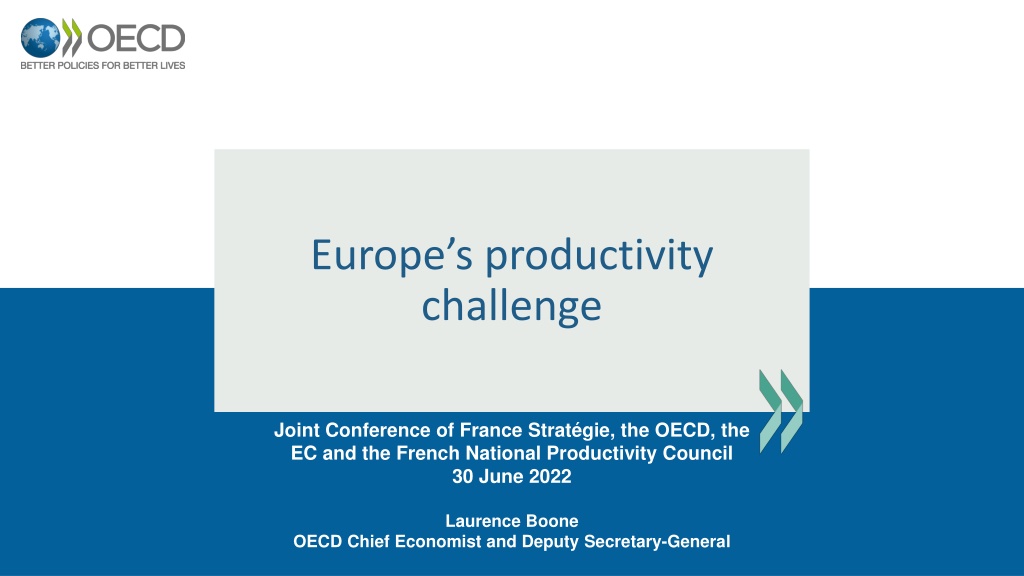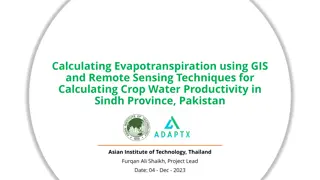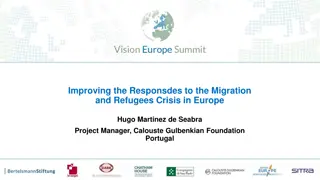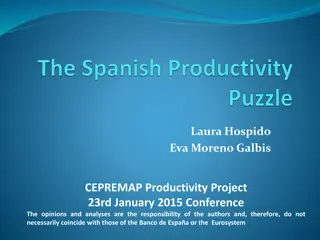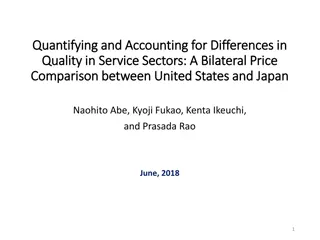Addressing Europe's Productivity Challenges: Insights and Strategies
Europe faces productivity challenges due to low skill levels, struggles in attracting foreign talent, and limited presence of European tech giants. Efforts are needed to enhance skills, retain STEM graduates, and boost innovation for economic growth.
Uploaded on Sep 30, 2024 | 0 Views
Download Presentation

Please find below an Image/Link to download the presentation.
The content on the website is provided AS IS for your information and personal use only. It may not be sold, licensed, or shared on other websites without obtaining consent from the author. Download presentation by click this link. If you encounter any issues during the download, it is possible that the publisher has removed the file from their server.
E N D
Presentation Transcript
Europes productivity challenge Joint Conference of France Strat gie, the OECD, the EC and the French National Productivity Council 30 June 2022 Laurence Boone OECD Chief Economist and Deputy Secretary-General
The EU risks returning to a low-growth path Euro area USA Contribution to potential GDP growth, % points Contribution to potential GDP growth, % points Note: Trend GDP growth refers to the growth rate of potential output. Euro area refers to the 17 member states of the euro area that are also members of the OECD. Source: OECD Economic Outlook 111 database; OECD calculations. 2
Many Europeans lack the skills needed to become more productive Poor ICT skills are common % of survey participants with very low or no ICT skills EU s share of top performers in maths and science is relatively low % top performers in science and/or mathematics, 15-year-olds, 2018 Note: op performers refer to students who have achieved at least Level 2 in all three core domains and at Level 5 in mathematics and/or science. EU is the unweighted average of EU27 countries. * Data did not meet the PISA technical standards but were accepted as largely comparable. TWN denotes Chinese Taipei. Source: PISA 2018; and OECD calculations Note: Very low or no ICT skills refers to level 1 or lower proficiency in problem solving in technology-rich environments. EU is the unweighted average of the following EU member states: AUT, CZE, DNK, EST, FIN, DEU, GRC, HUN, IRL, LTU, NLD, POL, SVK, SVN, SWE. Source: Survey of Adult Skills (PIAAC) (2012, 2015, 2018); and OECD calculations. 3
Europe struggles to attract foreign talent Europe trains scientists Tertiary graduates in STEM as % of total tertiary graduates But it struggles to retain them International net flows of scientific authors, cumulative Note: STEM refers to natural sciences, mathematics and statistics, ICT, engineering, manufacturing and construction. Tertiary education refers to education levels of short-cycle tertiary education, bachelor s or equivalent level, master s or equivalent level, and doctoral or equivalent level. EU refers to the 22 EU members that are also members of the OECD. Source: OECD Education at a Glance, and OECD calculations. Note: EU refers to the 27 member states of the EU. Source: OECD Science, Technology and Innovation Scoreboard; OECD calculations. 4
Few tech giants are European Europe only represents 6% of the top 100 global tech firms %, share of market capitalisation of the top 100 global tech firms USA alone accounts for more than 70% top global tech firms %, share of market capitalisation of the top 100 global tech firms 6% 6% 6% 6% Note: The market value is the average of June 2022 and converted to million USD. Technology firms refer to firms that fall under the category of Computer Services, Internet, Software, Computer Hardware, Electronic Office Equipment, Semiconductors and Telecommunications Equipment. TWN denotes Chinese Taipei. Source: DataStream Global Equity Index; and OECD calculations 5
Europe needs to pick up on digital investment European digital business investment is low Business investment in computer and electronic industry, billion USD PPP, 2019 or latest Considering its size, the EU lags behind on ICT patents ICT patents, 2018 Note: Data for the EU members FRA and NLD is from 2017. Source: OECD Main Science and Technology Indicators; OECD calculations. Source: OECD Patents Statistics; OECD calculations. 6
Thank you Find out more about our work at: https://www.oecd.org/economic-outlook/ https://twitter.com/oecdeconomy eco.contact@oecd.org https://oecdecoscope.blog/ 7
Higher R&D spending is also key for the green transition Public support for green innovation is insufficient Low-carbon public R&D expenditure, OECD, % of GDP The share of venture capital going to green start-ups is lower than in 2010 Share of venture capital investment for green start-ups, % Source: Crunchbase; Dealroom; OECD calculations. Source: : IEA Energy RD&D public expenditures (2021) 8
